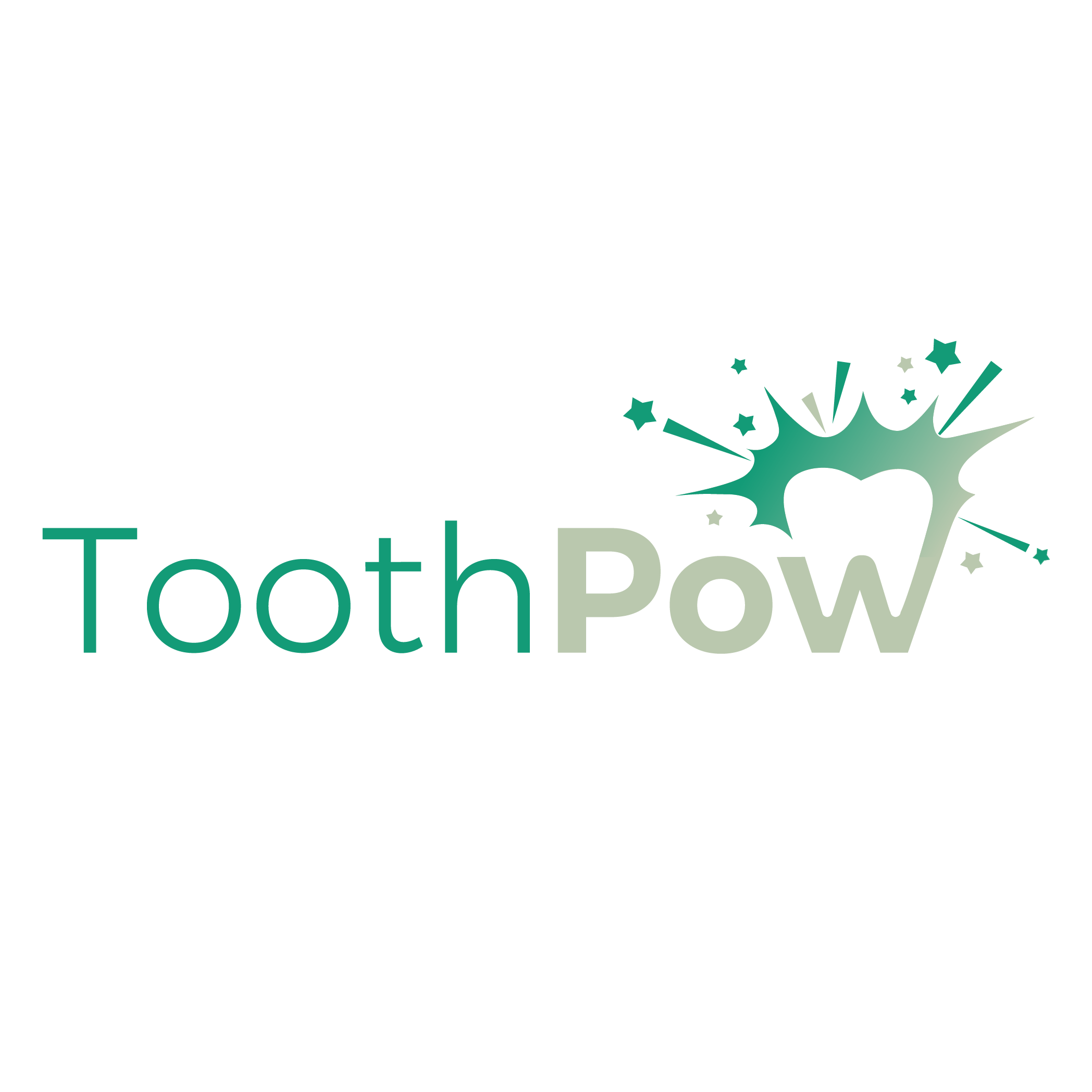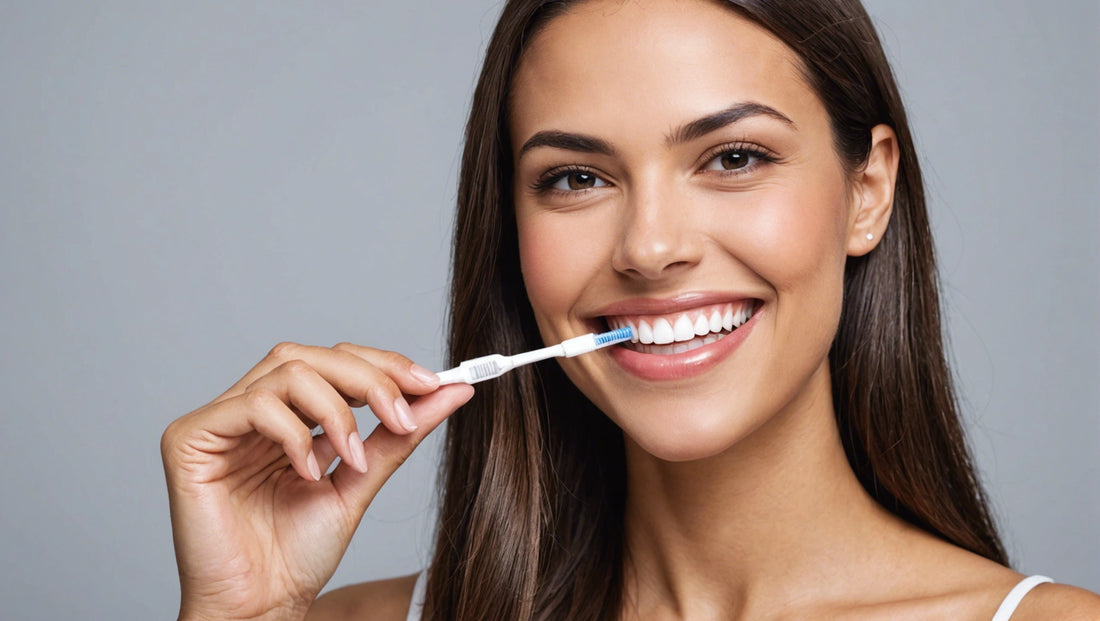Introduction
A bright, radiant smile is often associated with confidence and good health, making teeth whitening a highly sought-after cosmetic procedure. Over time, teeth can become discolored due to aging, dietary habits, and lifestyle choices such as smoking. This guide aims to provide comprehensive insights into achieving and maintaining a brighter smile.
We'll explore the various causes of tooth discoloration, professional and over-the-counter whitening options, natural methods, and tips for sustaining your pearly whites. Additionally, we'll debunk common myths and address potential risks associated with teeth whitening. By the end of this guide, you'll be well-equipped with the knowledge and practical tips to enhance your smile safely and effectively.
Let's dive into the world of teeth whitening and uncover the best tips and tricks for achieving the smile you've always dreamed of.
Understanding Teeth Discoloration
To effectively address teeth whitening, it’s important to understand the different types of tooth discoloration and their causes. Tooth discoloration can be broadly categorized into two types: extrinsic and intrinsic.
Types of Tooth Stains
Extrinsic Stains: These stains affect the outer layer of the tooth, known as the enamel. They are typically caused by external factors such as food, drinks, and tobacco use. Common culprits include coffee, tea, red wine, and dark-colored fruits like berries. Extrinsic stains are usually easier to treat with over-the-counter whitening products or professional dental treatments.
Intrinsic Stains: These stains occur within the tooth structure itself, often affecting the dentin, which is the layer beneath the enamel. Intrinsic stains can result from aging, certain medications (such as tetracycline), excessive fluoride intake during childhood, or trauma to the tooth. These stains are generally more challenging to remove and may require professional whitening treatments or other dental procedures.
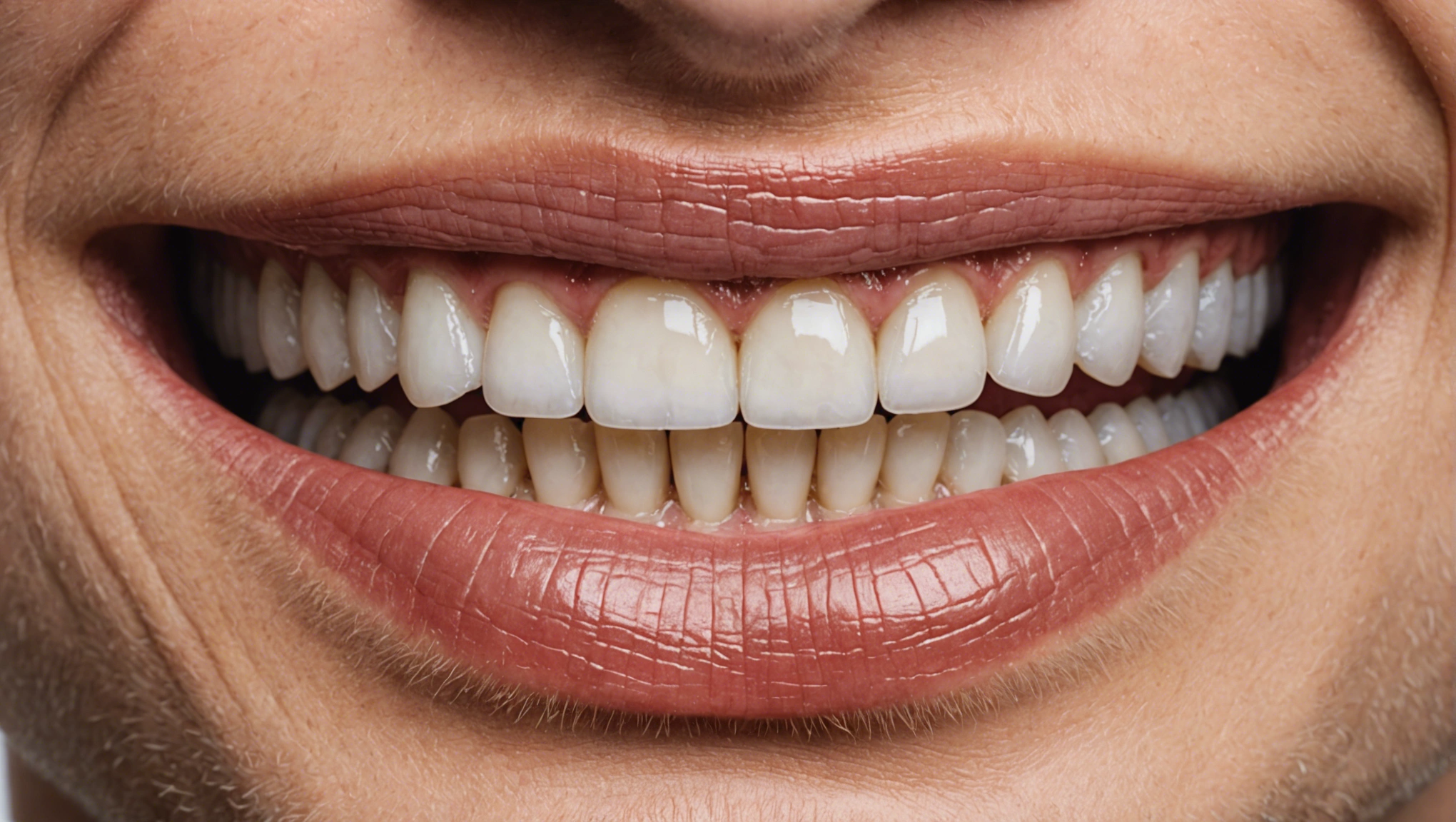
Common Causes of Teeth Staining
Food and Drinks: Consuming beverages like coffee, tea, red wine, and cola can lead to extrinsic staining over time. Foods with strong pigments, such as berries, soy sauce, and tomato sauce, can also contribute to tooth discoloration.
Tobacco Use: Smoking or chewing tobacco is a major cause of extrinsic stains, leading to yellow or brown discoloration. Nicotine and tar in tobacco products are notorious for staining teeth.
Poor Dental Hygiene: Inadequate brushing, flossing, and irregular dental check-ups can result in plaque and tartar build-up, which can cause teeth to appear yellow or brown.
Aging: As we age, the enamel on our teeth naturally wears down, revealing the yellowish dentin underneath. This process can lead to a duller, more discolored smile.
Medications: Certain medications, such as tetracycline antibiotics, can cause intrinsic stains if taken during tooth development. Antihistamines, antipsychotics, and high blood pressure medications can also contribute to tooth discoloration in adults.
Understanding the types and causes of tooth discoloration is the first step toward choosing the right whitening method. By identifying the source of the stains, you can tailor your approach to achieve the best results.
Professional Teeth Whitening Options
Professional teeth whitening treatments offer significant advantages over over-the-counter products, providing faster and more noticeable results. Here, we'll explore the two main types of professional whitening options: in-office treatments and take-home kits provided by dentists.
In-Office Whitening Treatments
Description and Process: In-office whitening, also known as chairside bleaching, is performed by a dental professional. This method uses a high-concentration bleaching agent, usually containing hydrogen peroxide or carbamide peroxide. The process typically involves the following steps:
Preparation: The dentist will begin by protecting your gums and soft tissues with a rubber shield or a protective gel.
Application: The whitening gel is then applied to your teeth.
Activation: A special light or laser may be used to enhance the effectiveness of the whitening agent.
Rinse and Repeat: The gel is left on your teeth for a specific period, often about 15-30 minutes, and may be reapplied multiple times during the same visit.
Benefits and Drawbacks:
-
Benefits:
Fast and dramatic results, often noticeable after just one session.
Professional supervision ensures safety and effectiveness.
Customizable treatment to achieve the desired level of whiteness.
-
Drawbacks:
Higher cost compared to over-the-counter options.
Potential for increased tooth sensitivity and gum irritation.
Requires a visit to the dentist, which may not be convenient for everyone.
Study: A clinical study published in the Journal of the American Dental Association found that in-office whitening treatments can lighten teeth by an average of 2-8 shades, significantly more than most over-the-counter products .
Take-Home Whitening Kits from Dentists
Description and Process: Take-home whitening kits provided by dentists offer a convenient way to whiten your teeth at home while still benefiting from professional-grade products. The process involves:
Custom Trays: Your dentist will take impressions of your teeth to create custom-fitted whitening trays.
Whitening Gel: You will be given a whitening gel, typically containing hydrogen peroxide or carbamide peroxide, to use with the trays.
Application: The trays filled with the gel are worn for a specified period each day, usually for several hours or overnight, over a course of one to two weeks.
Benefits and Drawbacks:
-
Benefits:
Custom-fitted trays ensure even and consistent application of the whitening gel.
The ability to whiten your teeth at your own convenience.
Less expensive than in-office treatments while still offering professional-grade results.
-
Drawbacks:
Results are slower to achieve compared to in-office treatments.
Requires consistent use over a period of time for optimal results.
Potential for tooth sensitivity and gum irritation, although typically milder than in-office treatments.
Study: Research published in the Journal of Clinical Dentistry indicates that take-home whitening kits with custom trays can achieve significant whitening results, comparable to in-office treatments when used correctly .
Cost Comparison of Professional Whitening Options
In-Office Whitening: The cost for in-office whitening treatments can range from $300 to $1,000 per session, depending on the dentist's location, the severity of staining, and the specific treatment used.
Take-Home Whitening Kits: Take-home kits from a dentist generally cost between $150 and $400, making them a more affordable alternative to in-office treatments while still providing professional-level results.
Choosing the right professional whitening option depends on your budget, the speed at which you want to see results, and your personal preference for in-office or at-home treatments.
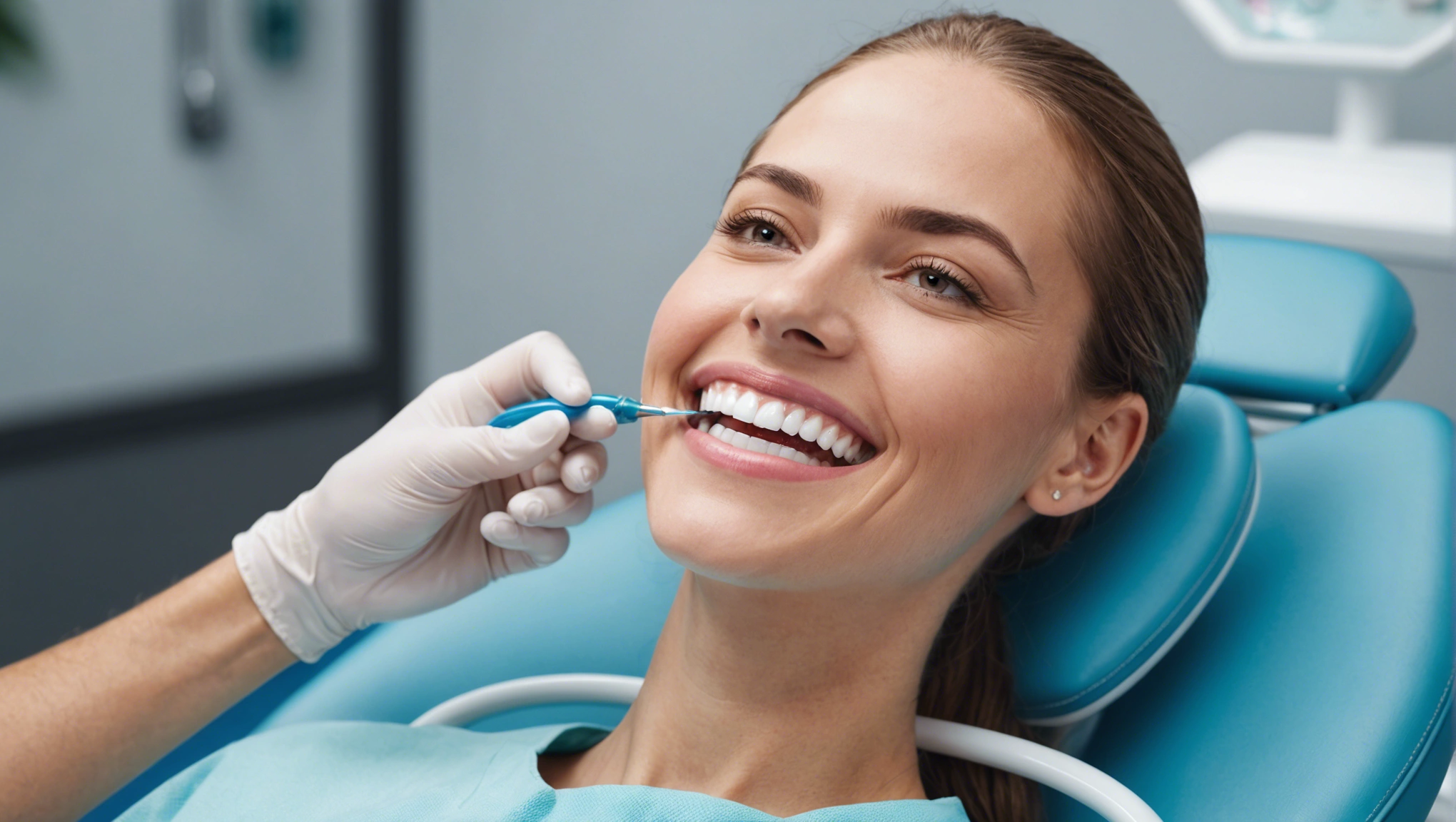
Over-the-Counter Teeth Whitening Products
Over-the-counter (OTC) teeth whitening products offer a convenient and often more affordable alternative to professional treatments. While these products may not deliver the same dramatic results as professional options, they can still be effective for mild to moderate teeth discoloration. Here, we'll discuss the most popular OTC whitening products: whitening toothpaste, whitening strips, whitening gels and trays, and whitening pens.
Whitening Toothpaste
How They Work: Whitening toothpaste contains mild abrasives that help remove surface stains from teeth. Some also include low concentrations of bleaching agents such as hydrogen peroxide or carbamide peroxide to enhance the whitening effect.
Benefits and Limitations:
-
Benefits:
Easy to incorporate into your daily oral hygiene routine.
Helps maintain the results of other whitening treatments.
Affordable and widely available.
-
Limitations:
Only effective for removing surface stains; not suitable for deeper, intrinsic stains.
Results are gradual and less noticeable compared to other whitening methods.
Study: According to a study in the Journal of Clinical Dentistry, whitening toothpaste can be effective in removing surface stains and slightly improving tooth color with regular use .
Whitening Strips
How They Work: Whitening strips are thin, flexible strips coated with a peroxide-based gel. They are applied directly to the teeth and worn for a specified period, usually 30 minutes, once or twice a day for one to two weeks.
Benefits and Limitations:
-
Benefits:
Convenient and easy to use.
Provide noticeable results within a few days of consistent use.
Less expensive than professional treatments.
-
Limitations:
Can cause tooth sensitivity and gum irritation.
May not cover all teeth surfaces evenly, leading to uneven whitening.
Results may not be as long-lasting as professional treatments.
Study: Research published in the American Journal of Dentistry found that whitening strips can effectively lighten teeth by several shades over a two-week period .
Whitening Gels and Trays
How They Work: Whitening gels and trays involve applying a peroxide-based gel to custom-fitted or universal trays that are then worn over the teeth. These products can be purchased OTC or provided by a dentist for at-home use.
Benefits and Limitations:
-
Benefits:
Custom-fitted trays ensure even distribution of the whitening gel.
Provide significant whitening results when used consistently.
More affordable than in-office treatments.
-
Limitations:
Results can vary based on the fit of the trays and consistency of use.
Can cause tooth sensitivity and gum irritation.
Longer treatment duration compared to in-office treatments.
Study: A study in the Journal of Esthetic and Restorative Dentistry found that OTC whitening gels and trays can effectively whiten teeth, although the results are typically less dramatic than professional treatments .
Whitening Pens
How They Work: Whitening pens are small, portable devices containing a peroxide-based gel. The gel is applied directly to the teeth using the pen's brush tip, allowing for targeted application.
Benefits and Limitations:
-
Benefits:
Convenient and easy to use, making them ideal for touch-ups.
Portable and can be used anywhere.
Provides targeted application for specific areas.
-
Limitations:
Results are usually subtle and may not be as noticeable as other methods.
Requires consistent and regular application.
Can cause tooth sensitivity and gum irritation.
Study: According to a review in the Journal of Dentistry, whitening pens are effective for maintaining results from other whitening treatments and for minor touch-ups .
OTC teeth whitening products can be a great option for those looking to improve their smile without the cost of professional treatments. However, for more significant or long-lasting results, professional options or a combination of both may be necessary.
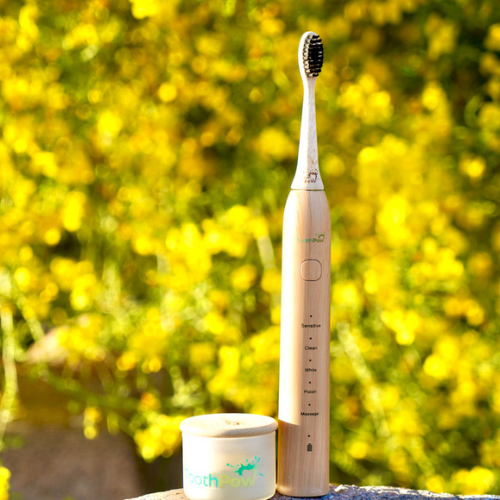
Natural Teeth Whitening Methods
Natural teeth whitening methods have gained popularity among those seeking a more holistic approach to dental care. These methods use everyday ingredients that can help reduce surface stains and improve the overall appearance of your teeth. Here, we'll explore some of the most common natural whitening methods, their benefits, and potential risks.
Baking Soda and Hydrogen Peroxide
How They Work: Baking soda (sodium bicarbonate) is a mild abrasive that can help remove surface stains from teeth. Hydrogen peroxide is a bleaching agent that can penetrate the enamel and lighten intrinsic stains.
Benefits and Risks:
-
Benefits:
Inexpensive and easily accessible.
Can provide noticeable results with regular use.
-
Risks:
Overuse can lead to enamel erosion and increased tooth sensitivity.
Hydrogen peroxide can irritate gums if not used properly.
Study: A study published in the Journal of Clinical Dentistry found that a combination of baking soda and hydrogen peroxide can effectively whiten teeth and remove surface stains .
Oil Pulling
How It Works: Oil pulling involves swishing oil (typically coconut oil) around in your mouth for 15-20 minutes. The oil is believed to "pull" bacteria and toxins from the mouth, which can contribute to overall oral health and whiter teeth.
Benefits and Risks:
-
Benefits:
Natural and gentle on teeth and gums.
Can improve overall oral health by reducing bacteria.
-
Risks:
Limited scientific evidence supporting its effectiveness for teeth whitening.
Time-consuming and may not provide dramatic results.
Study: Research in the Journal of Traditional and Complementary Medicine suggests that oil pulling can improve oral health and reduce bacteria, which may indirectly contribute to whiter teeth .
Apple Cider Vinegar
How It Works: Apple cider vinegar (ACV) is acidic and has natural bleaching properties that can help remove surface stains. It can be used as a mouth rinse or mixed with water for brushing.
Benefits and Risks:
-
Benefits:
Natural and inexpensive.
Can help remove surface stains with occasional use.
-
Risks:
Highly acidic and can erode tooth enamel with frequent use.
Can cause tooth sensitivity and gum irritation.
Study: A study in the Journal of Prosthodontics found that while ACV has bleaching properties, its high acidity can cause enamel erosion if used excessively .
Activated Charcoal
How It Works: Activated charcoal is a porous substance that can bind to stains and toxins on the teeth, helping to remove them. It is often used in powder form and applied by brushing.
Benefits and Risks:
-
Benefits:
Natural and free from harsh chemicals.
Can provide immediate results in removing surface stains.
-
Risks:
Highly abrasive and can damage tooth enamel with regular use.
Limited scientific evidence supporting its long-term effectiveness.
Study: A review in the Journal of the American Dental Association cautions that while activated charcoal can remove surface stains, its abrasive nature poses a risk to tooth enamel .
Natural teeth whitening methods can be effective for minor surface stains and are appealing for those seeking a chemical-free approach. However, it is essential to use these methods cautiously to avoid damaging your teeth and gums.

Specialized Whitening Techniques
When it comes to achieving a brighter smile, there are advanced whitening systems available that go beyond traditional methods. One such system is the KOR Whitening System, known for its effectiveness in treating even the most stubborn stains. This system utilizes a combination of in-office treatments and at-home maintenance to deliver long-lasting results.
In addition to exploring advanced whitening systems, it's important to consider the impact of veneers and other cosmetic dentistry procedures on the overall whitening process. Veneers, for example, do not respond to traditional whitening treatments, so it's crucial to discuss whitening options with your dentist before undergoing any cosmetic procedures to ensure a consistent and natural-looking smile.
By understanding the specialized whitening techniques available and considering the implications of cosmetic dentistry, individuals can make informed decisions to achieve the bright, white smile they desire.
Advanced Whitening Systems like KOR
The KOR Whitening System is a revolutionary approach to teeth whitening that has gained popularity for its ability to tackle even the toughest stains. Unlike over-the-counter whitening products, the KOR system is designed to provide professional-grade results that last.
One of the key features of the KOR Whitening System is its dual-activated, tri-barrel Hydremide Peroxide formula. This formula ensures thorough penetration of the teeth, breaking down deep stains and discoloration effectively. The in-office treatment, combined with customized take-home trays, allows for a comprehensive whitening experience that is tailored to individual needs.
Considerations for Veneers and Cosmetic Dentistry
While teeth whitening can significantly enhance the appearance of your smile, it's essential to consider how other cosmetic dentistry procedures, such as veneers, can impact the overall outcome. Veneers are thin shells made of porcelain or composite resin that are bonded to the front surface of teeth to improve their appearance.
Unlike natural teeth, veneers do not respond to traditional whitening treatments. Therefore, if you are considering getting veneers, it's crucial to discuss your whitening options with your dentist beforehand. Your dentist can recommend the best approach to ensure that your natural teeth and veneers match in color, creating a seamless and harmonious smile.
By exploring advanced whitening systems like KOR and understanding the implications of cosmetic dentistry procedures, individuals can achieve a radiant smile that exudes confidence and beauty.
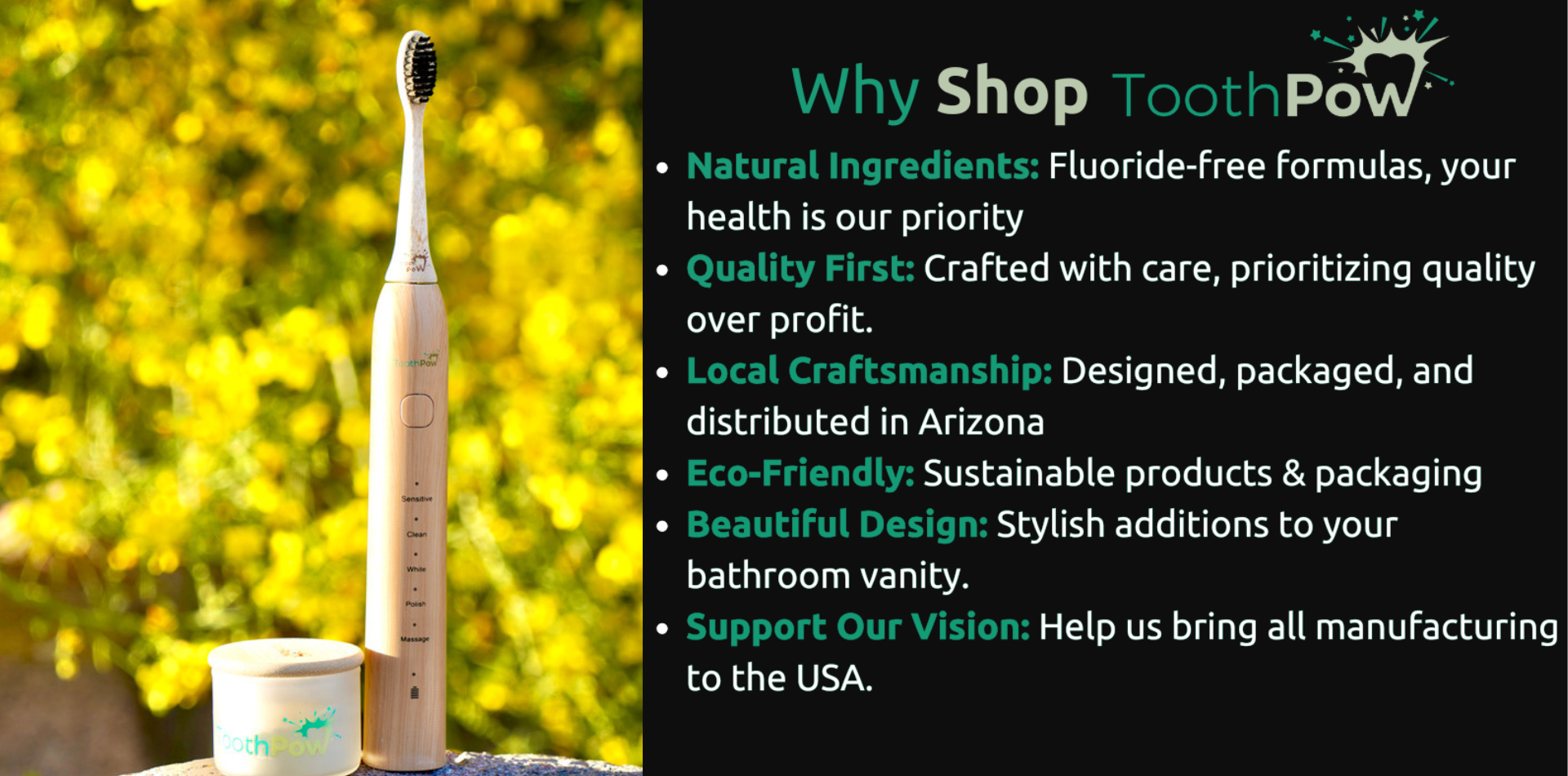
Maintaining Your White Smile
Achieving a bright smile through whitening treatments is just the first step; maintaining that whiteness requires ongoing care and attention. Here are some tips and strategies to help you keep your smile radiant and prevent future discoloration.
Good Oral Hygiene Practices
Brush and Floss Regularly:
Brush your teeth at least twice a day with a whitening toothpaste to remove surface stains and plaque.
Floss daily to remove food particles and plaque between your teeth and along the gum line.
Use an Electric Toothbrush:
Electric toothbrushes, like the ToothPow Sonic Brush, provide more effective cleaning compared to manual brushes, helping to maintain your whitening results.
Replace Your Toothbrush Regularly:
Replace your toothbrush or brush head every three to four months, or sooner if the bristles are frayed, to ensure effective cleaning.
Study: A study published in the International Journal of Dental Hygiene found that electric toothbrushes are more effective at reducing plaque and gingivitis compared to manual toothbrushes.
Dietary Adjustments
Avoid Staining Foods and Beverages:
Limit your consumption of foods and drinks that can stain your teeth, such as coffee, tea, red wine, cola, and dark-colored fruits like berries.
Use a Straw:
When drinking beverages that can stain your teeth, use a straw to minimize contact with your teeth and reduce the risk of discoloration.
Rinse Your Mouth:
After consuming staining foods or drinks, rinse your mouth with water to help wash away any staining agents before they can affect your teeth.
Regular Dental Check-Ups
Professional Cleanings:
Visit your dentist for regular cleanings every six months to remove plaque and tartar that can contribute to tooth discoloration.
Check for Cavities and Gum Disease:
Regular dental check-ups help detect and treat cavities and gum disease early, which can affect the appearance of your teeth.
Study: Research in the Journal of Clinical Periodontology emphasizes the importance of regular dental visits for maintaining oral health and preventing discoloration.
At-Home Whitening Maintenance
Whitening Toothpaste and Mouthwash:
Use whitening toothpaste and mouthwash as part of your daily routine to help maintain your whitening results and prevent new stains.
Touch-Up Treatments:
Consider using touch-up whitening treatments, such as whitening strips or take-home whitening kits from your dentist, to maintain your bright smile.
Natural Remedies:
Incorporate natural whitening methods, such as baking soda or oil pulling, into your routine for additional maintenance.
Avoiding Harmful Habits
Quit Smoking:
Smoking is a major cause of tooth discoloration and can negate the effects of whitening treatments. Quitting smoking will not only benefit your oral health but also improve the appearance of your teeth.
Limit Alcohol Consumption:
Alcoholic beverages, particularly red wine and dark liquors, can stain your teeth. Limiting your intake can help maintain your whitening results.
Avoid Sugary and Acidic Foods:
Foods high in sugar and acid can erode tooth enamel and lead to discoloration. Reducing your consumption of these foods can help protect your teeth.
Maintaining a white smile requires a combination of good oral hygiene, dietary adjustments, regular dental check-ups, and avoiding harmful habits. By following these tips, you can prolong the results of your whitening treatments and enjoy a bright, confident smile for years to come.
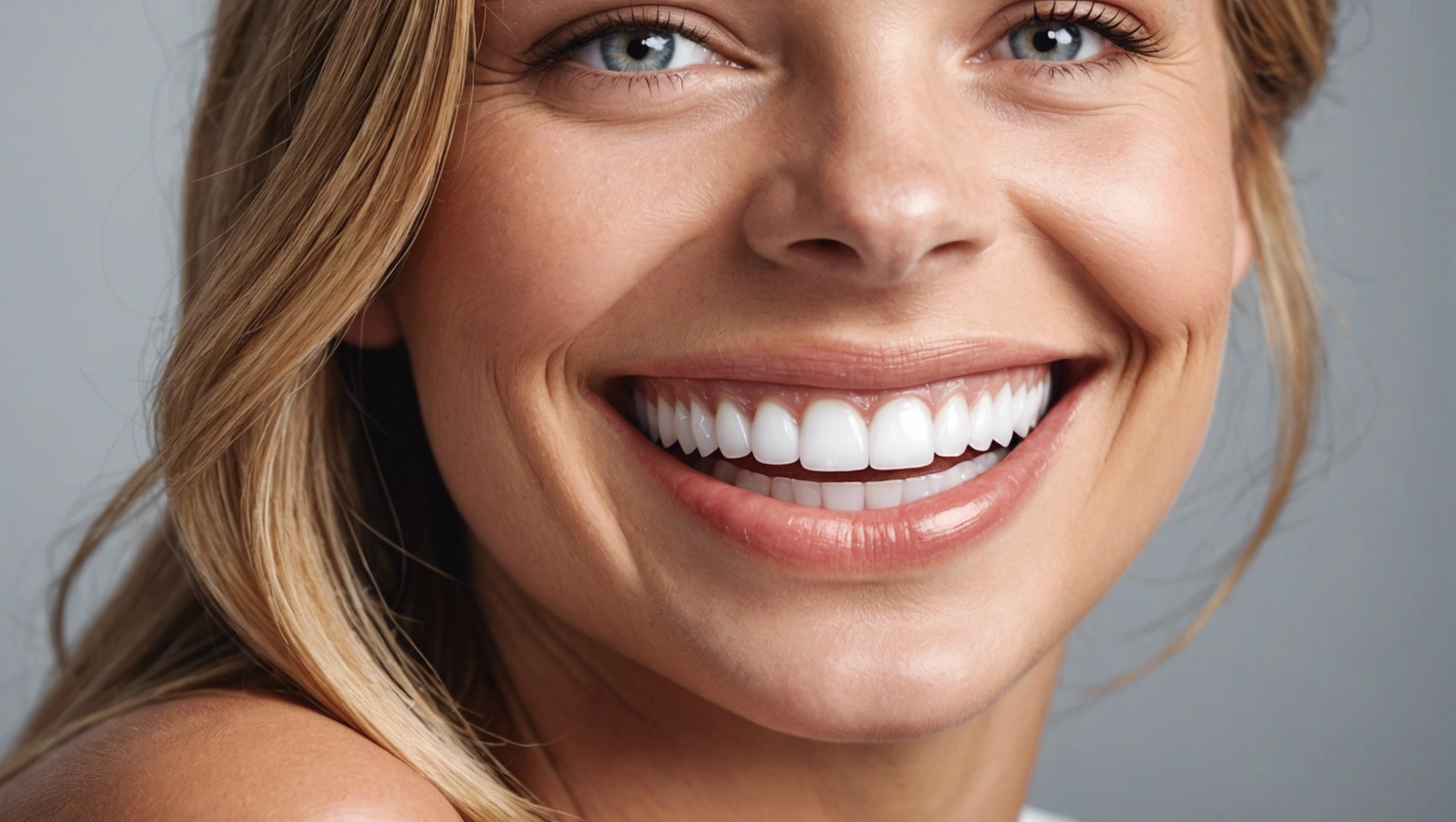
Debunking Common Teeth Whitening Myths
There are many myths and misconceptions about teeth whitening that can lead to confusion and ineffective practices. In this section, we will debunk some of the most common myths to help you make informed decisions about your oral care routine.
Myth 1: Whitening Toothpaste Can Whiten Teeth Overnight
Reality: Whitening toothpaste can help remove surface stains and prevent new ones from forming, but it does not contain the same concentration of bleaching agents as professional treatments. Results are gradual and usually take several weeks of consistent use to become noticeable.
Fact: According to the American Dental Association, whitening toothpaste can effectively remove surface stains but is not intended to change the natural color of your teeth.
Myth 2: Whitening Damages Tooth Enamel
Reality: When used correctly, both professional and over-the-counter whitening products are safe and do not damage tooth enamel. The key is to follow the instructions and avoid overuse.
Fact: A study published in the Journal of the American Dental Association found that whitening products containing hydrogen peroxide or carbamide peroxide are safe for enamel when used as directed.
Myth 3: Whitening Works the Same for Everyone
Reality: The effectiveness of whitening treatments can vary based on several factors, including the original shade of your teeth, the type and severity of stains, and individual enamel composition. Some people may achieve better results than others.
Fact: Research in the Journal of Dentistry shows that teeth whitening outcomes can vary significantly among individuals, and some stains (such as those caused by tetracycline antibiotics) are more resistant to whitening.
Myth 4: Whitening Products Can Replace Regular Dental Care
Reality: Whitening products are designed to improve the appearance of your teeth but do not replace the need for regular dental care. Brushing, flossing, and professional cleanings are essential for maintaining oral health.
Fact: The American Dental Association emphasizes that whitening should be part of a comprehensive oral care routine, which includes brushing twice a day, flossing daily, and visiting the dentist regularly.
Myth 5: All Whitening Products Are the Same
Reality: There are many different types of whitening products, each with varying ingredients, concentrations, and methods of application. Professional treatments typically offer more significant results than over-the-counter products.
Fact: According to a review in the Journal of Esthetic and Restorative Dentistry, professional whitening treatments can achieve more dramatic and longer-lasting results compared to over-the-counter options due to higher concentrations of active ingredients and customized application methods.
Myth 6: Natural Whitening Methods Are Completely Safe
Reality: While natural whitening methods like baking soda and activated charcoal can be effective, they can also be abrasive and damage enamel if used excessively. It's important to use these methods cautiously and not rely on them as your primary whitening solution.
Fact: A study in the Journal of Applied Oral Science highlights the potential abrasiveness of natural whitening agents and recommends using them sparingly to avoid enamel erosion.
Myth 7: Whitening Is Permanent
Reality: Teeth whitening is not permanent, and the results can fade over time due to various factors, including diet, lifestyle habits, and aging. Touch-up treatments and good oral hygiene practices are necessary to maintain your white smile.
Fact: Research published in the Journal of Clinical Dentistry shows that while teeth whitening can produce long-lasting results, periodic maintenance treatments are often required to preserve the whiteness.
Understanding the facts behind these common myths can help you make better choices and achieve optimal results from your teeth whitening efforts. By staying informed, you can enjoy a brighter, healthier smile with confidence.
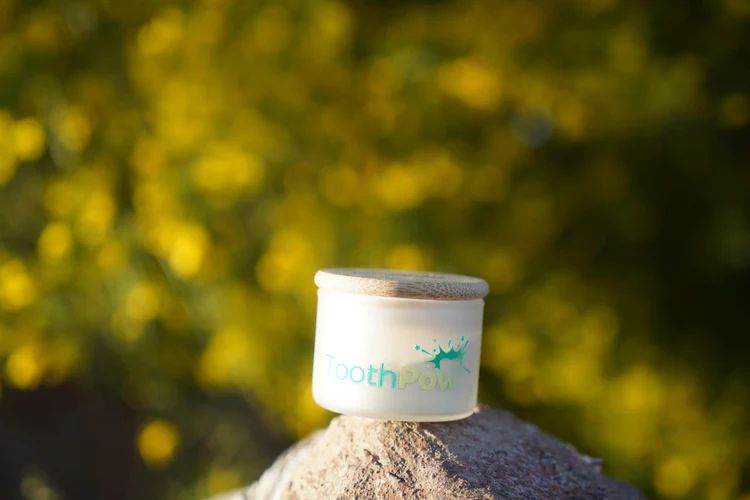
The Role of Diet in Teeth Whitening
Diet plays a significant role in the color and health of your teeth. Certain foods and beverages can stain your teeth, while others can help keep them white and healthy. Understanding how your diet affects your teeth can help you make better choices to maintain a bright smile.
Foods and Beverages That Stain Teeth
Coffee and Tea:
Both coffee and tea contain tannins, which can cause discoloration. Black tea and coffee are especially notorious for staining teeth.
Red Wine:
Red wine is acidic and contains chromogens and tannins, which can stain teeth.
Berries:
Dark-colored berries such as blueberries, blackberries, and cherries can stain teeth due to their deep pigment.
Cola and Other Dark Sodas:
These beverages are acidic and often contain caramel coloring, which can lead to staining.
Soy Sauce and Balsamic Vinegar:
These dark-colored condiments can stain teeth due to their deep pigmentation.
Curry and Tomato Sauce:
Spices and sauces with intense color can adhere to the teeth and cause staining over time.
Study: According to a study published in the Journal of Dentistry, the frequent consumption of staining foods and beverages is strongly associated with tooth discoloration.
Foods That Help Whiten Teeth
Crunchy Fruits and Vegetables:
Apples, carrots, and celery can help clean teeth as you eat them. Their natural abrasiveness acts like a toothbrush, scrubbing away surface stains.
Strawberries:
Strawberries contain malic acid, which can help remove surface stains. However, they should be used in moderation due to their natural sugar content.
Dairy Products:
Milk, cheese, and yogurt contain calcium and phosphorus, which can help strengthen tooth enamel and prevent staining.
Nuts and Seeds:
Chewing nuts and seeds can help scrub away plaque and surface stains due to their abrasive texture.
Study: Research in the Journal of the American Dental Association indicates that consuming a diet rich in fruits and vegetables can contribute to healthier and whiter teeth.
Tips for Minimizing Staining
Drink Through a Straw:
Using a straw can help minimize contact between staining beverages and your teeth, reducing the risk of discoloration.
Rinse Your Mouth:
After consuming staining foods or drinks, rinse your mouth with water to help wash away any staining agents.
Brush and Floss Regularly:
Maintaining good oral hygiene is essential for preventing stains. Brush your teeth at least twice a day and floss daily to remove plaque and food particles.
Limit Acidic Foods and Drinks:
Acidic foods and drinks can erode tooth enamel, making it more susceptible to staining. Try to limit your intake of acidic items and rinse your mouth with water afterward.
Use Whitening Toothpaste:
Incorporate a whitening toothpaste into your oral hygiene routine to help remove surface stains and prevent new ones from forming.
Diet plays a crucial role in maintaining a bright, healthy smile. By being mindful of what you eat and drink, you can reduce the risk of staining and help keep your teeth white. Combine these dietary tips with good oral hygiene practices for the best results.

Potential Risks and Side Effects of Teeth Whitening
While teeth whitening is generally safe, it is important to be aware of potential risks and side effects. Understanding these can help you take the necessary precautions to minimize any adverse effects.
Tooth Sensitivity
Cause:
Tooth sensitivity is one of the most common side effects of teeth whitening. It occurs when the bleaching agents penetrate the enamel and irritate the nerves inside the teeth.
Prevention and Management:
Use desensitizing toothpaste containing potassium nitrate or fluoride to help reduce sensitivity.
Avoid extremely hot or cold foods and beverages immediately after whitening treatments.
Follow the instructions provided with whitening products carefully to avoid overuse.
Study: A study published in the Journal of the American Dental Association found that tooth sensitivity following whitening treatments is usually temporary and can be managed with desensitizing products.
Gum Irritation
Cause:
Whitening agents can cause irritation if they come into contact with the gums. This is often due to improper application or overuse of the whitening product.
Prevention and Management:
Use a protective barrier such as petroleum jelly to shield your gums during at-home whitening treatments.
Ensure that whitening trays fit properly to prevent the gel from spilling onto the gums.
Follow the recommended usage guidelines and avoid leaving the product on for longer than advised.
Study: Research in the Journal of Clinical Periodontology indicates that gum irritation from whitening agents is usually mild and temporary, resolving within a few days of discontinuing use.
Enamel Damage
Cause:
Overuse or misuse of whitening products can lead to enamel erosion, weakening the tooth structure and increasing the risk of decay and sensitivity.
Prevention and Management:
Use whitening products as directed and avoid excessive or prolonged use.
Opt for professional whitening treatments if you have concerns about enamel safety.
Incorporate enamel-strengthening products, such as toothpaste with fluoride or nano-hydroxyapatite, into your oral care routine.
Study: A study in the Journal of Dentistry found that while most whitening products are safe when used correctly, overuse can lead to enamel damage and increased tooth sensitivity.
Uneven Whitening
Cause:
Uneven whitening can occur if the whitening product is not applied uniformly or if there are variations in the tooth surface.
Prevention and Management:
Follow the application instructions carefully to ensure even coverage.
Use custom-fitted trays for at-home treatments to ensure the whitening gel is evenly distributed.
Consider professional whitening treatments for more consistent results.
Study: Research published in the Journal of Esthetic and Restorative Dentistry highlights that professional whitening treatments can provide more uniform results compared to over-the-counter products.
Allergic Reactions
Cause:
Some individuals may experience allergic reactions to the ingredients in whitening products.
Prevention and Management:
Test the product on a small area of your gums before full application to check for any adverse reactions.
Discontinue use immediately if you experience any signs of an allergic reaction, such as swelling, redness, or itching.
Consult with a dentist for alternative whitening options if you have known sensitivities or allergies.
Study: According to a study in the International Journal of Dental Hygiene, allergic reactions to whitening products are rare but can occur, emphasizing the importance of patch testing and consulting with a dentist.
Teeth whitening can effectively enhance your smile, but it is important to be aware of potential side effects and take steps to minimize them. Following product instructions carefully and consulting with a dental professional can help ensure a safe and successful whitening experience.
Conclusion
Achieving a brighter smile is a journey that involves understanding the causes of tooth discoloration, choosing the right whitening methods, and maintaining the results with good oral hygiene and dietary habits. Whether you opt for professional treatments, over-the-counter products, or natural remedies, it's important to use these methods correctly and be aware of potential risks.
A bright, radiant smile can boost your confidence and enhance your overall appearance. By following the tips and tricks outlined in this guide, you can achieve and maintain a whiter smile safely and effectively. Remember, it's always best to consult with a dental professional before starting any new whitening regimen to ensure it’s suitable for your individual needs.
Embrace the journey to a brighter smile, and enjoy the benefits of a more confident and beautiful you!
